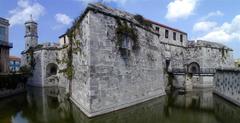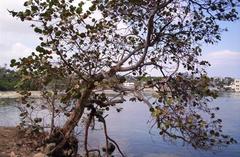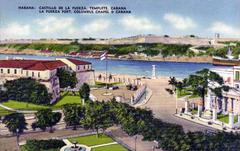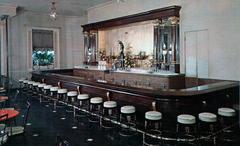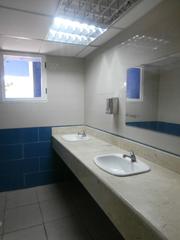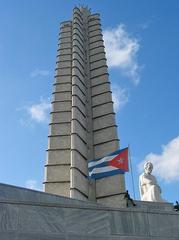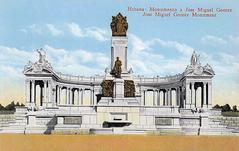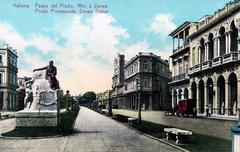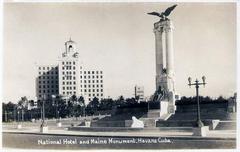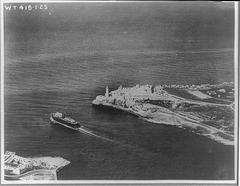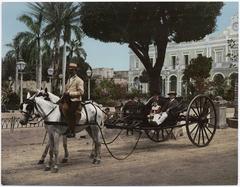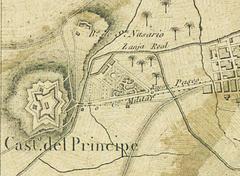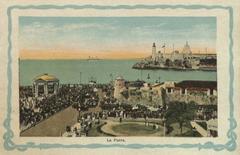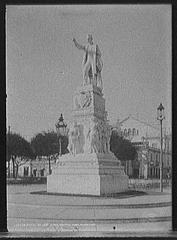
Acueducto de Albear Visiting Hours, Tickets, and Havana Historical Sites Guide
Date: 04/07/2025
Introduction
Nestled in Havana Province, Cuba, the Acueducto de Albear stands as a testament to 19th-century engineering ingenuity and Cuban cultural heritage. Designed by Colonel Francisco de Albear y Fernández de Lara, this aqueduct was conceived to solve Havana’s critical potable water shortages during a period of rapid urban expansion and frequent cholera outbreaks. Through innovative use of gravity and meticulous hydraulic design, the aqueduct channels pristine water from the Vento Springs nearly 30 kilometers away, a remarkable technical achievement that remains in operation today. As one of Cuba’s seven civil engineering wonders, the Acueducto de Albear continues to supply a significant share of Havana’s water and serves as a bridge between past and present. This comprehensive guide provides essential details on visiting hours, ticketing, accessibility, guided tours, and nearby attractions, ensuring you make the most of your visit to this iconic Havana landmark (Eastern Engineering Group; CubaPLUS Magazine; Wikipedia).
Table of Contents
- Introduction
- Historical Background
- Engineering Overview
- Visiting the Acueducto de Albear
- Key Sites and Nearby Attractions
- Visitor Experience and Educational Value
- Conservation and Community Engagement
- Frequently Asked Questions (FAQ)
- Summary and Final Tips
- References
Historical Background
Early Water Supply Challenges in Havana
In the early 19th century, Havana faced severe water shortages, with existing systems like the Zanja Real and the Acueducto Fernando VII unable to meet the demands of a growing population. This scarcity resulted in repeated cholera outbreaks and high mortality from waterborne diseases during the 1850s-1870s, underscoring the urgent need for a reliable water source (Liquisearch; Eastern Engineering Group).
Engineering Vision and Project Launch
Recognizing the crisis, Governor José Gutiérrez de la Concha established a commission in 1852, led by Colonel Francisco de Albear y Fernández de Lara. After extensive studies, Albear and his team identified the Vento Springs—located 30 kilometers from Havana and 41 meters above the city—as the optimal source. Their gravity-fed design eliminated the need for pumps, ensuring a sustainable water supply (Liquisearch).
Albear’s plan was approved in 1858 by royal decree, and construction began soon after. His topographical surveys and closed masonry conduit design were groundbreaking, allowing water to travel efficiently into the city (Eastern Engineering Group).
Construction and Recognition
Despite economic challenges and interruptions from conflicts like the Ten Years’ War, construction continued under strict adherence to Albear’s plans. The aqueduct was inaugurated in 1893, six years after Albear’s death. Its innovative design earned international acclaim, winning a Gold Medal at the 1878 Paris Universal Exposition, and it remains a symbol of progress and public health in Havana (CubaPLUS Magazine).
Engineering Overview
Design Principles
The Acueducto de Albear exemplifies precision engineering for its time. Its closed masonry conduit maintains a gentle, consistent gradient, enabling gravity to transport water over 11 kilometers without pumps. This required careful surveying of Havana’s topography and the use of advanced construction techniques (CubaPLUS Magazine).
Hydraulic Innovations
The aqueduct’s intake at the Vento Springs utilizes sedimentation tanks and filtration systems to ensure water purity. Its oval main channel, measuring 2.40 x 1.98 meters, was designed for optimal flow and minimal loss. At full operation, it could deliver up to 144,000 cubic meters of water daily—a volume that still covers around 12–15% of Havana’s needs today (Wikipedia; CubaPLUS Magazine).
Architectural Features
Although much of the aqueduct runs underground, several above-ground sections—particularly the stone arches in the Cerro and Plaza de la Revolución districts—are visible. These structures blend neoclassical and utilitarian elements, with robust columns and graceful arches that have become part of Havana’s urban landscape (Tecnología Cuba).
Visiting the Acueducto de Albear
Hours and Ticketing
- Outdoor Sections: Publicly accessible at all hours in districts like Cerro and Plaza de la Revolución.
- Specialized Sites (e.g., Palatino Reservoirs): Open Tuesday–Sunday, 9:00 AM to 5:00 PM, via guided tours or by arrangement.
- Tickets: Outdoor sections are free to view. Guided tours and visits to restricted infrastructure typically require a fee (around 5 CUC), available onsite or through official tour operators (INRH).
Accessibility
Most visible sections are accessible via public streets and paved sidewalks. Some guided tours include areas with uneven ground or stairs—visitors with mobility concerns should confirm details with tour providers in advance.
Guided Tours
Guided tours, especially along the “Ruta del Agua,” provide detailed insights into the aqueduct’s history and function. These tours may include the Vento Springs (by prior arrangement), the Palatino Reservoirs, and key above-ground sections. Tours can be booked online or through Havana’s tourist information centers (Hidro Cuba).
Travel Tips
- Best Time to Visit: The dry season (November–April) offers pleasant weather.
- Essentials: Wear comfortable shoes and bring sun protection. Guided tours fill quickly during peak seasons—book in advance.
- Photography: The arches and reservoirs make excellent photography subjects; respect signage and avoid restricted areas (Kimkim).
Key Sites and Nearby Attractions
- Palatino Reservoirs: The aqueduct’s main water storage, showcasing 19th-century hydraulic engineering (EcuRed).
- Visible Stone Arches: Iconic above-ground sections in Cerro and Plaza de la Revolución.
- Cementerio de Colón: A historic cemetery nearby.
- Plaza de la Revolución: Political center of Havana, close to several aqueduct segments.
- El Vedado and Centro Habana: Districts rich in architecture and local culture.
Visitor Experience and Educational Value
Interpretive signage and plaques offer historical and technical details at key points. The site is a popular subject for educational field trips, and professional recognition events like the Premio Albear highlight its ongoing relevance (Radio Ciudad de la Habana).
Conservation and Community Engagement
Regular restoration efforts keep the aqueduct both operational and historically preserved. In 2023, it became the first Caribbean member of the UNESCO Global Network of Water Museums, further solidifying its international significance (Water Museums Network). Community events and educational programs foster appreciation for this engineering marvel.
Frequently Asked Questions (FAQ)
Q: What are the Acueducto de Albear visiting hours?
A: Outdoor sections are accessible anytime. Guided tours and reservoir visits are generally available Tuesday to Sunday, 9:00 AM–5:00 PM.
Q: Is there an entrance fee?
A: Viewing outdoor sections is free. Tours or visits to restricted areas may require a modest fee.
Q: Are guided tours available?
A: Yes, several operators and heritage organizations offer guided tours. Booking in advance is advised.
Q: Is the site accessible for people with disabilities?
A: Many sections are accessible, but some require walking on uneven surfaces or stairs. Check with tour providers for details.
Q: What is the best time to visit?
A: The dry season (November–April) offers the most comfortable weather.
Summary and Final Tips
The Acueducto de Albear is a remarkable blend of engineering, history, and architecture. Its gravity-driven design and elegant stonework not only solved Havana’s water crisis but also set a new standard for public health and urban planning in the Caribbean. Recognized globally—having won a Gold Medal at the 1878 Paris Exposition and joined the UNESCO Global Network of Water Museums—the aqueduct continues to educate and inspire. For the richest experience, plan your visit during the dry season, join a guided tour, and explore nearby Havana landmarks. Enhance your trip by using resources like the Audiala app and official tourism platforms (Eastern Engineering Group; CubaPLUS Magazine; Wikipedia).
References and Further Reading
- Acueducto de Albear: Una maravilla de la ingeniería civil cubana, Eastern Engineering Group
- Hito histórico: Acueducto Albear, CubaPLUS Magazine
- Albear aqueduct, Wikipedia
- Acueducto de Albear: Background and Historical Context, Liquisearch
- Acueducto de Albear Visiting Information and Cultural Significance, INRH
- Palatino Reservoirs, EcuRed
- El acueducto de Albear: historia y significado, Tecnología Cuba
- Acueducto de Albear: 130 años de una obra monumental, Radio Ciudad de la Habana
- The Albear Aqueduct, Water Museums Network
- Cuba in July: Travel Tips, Weather, and More, Kimkim






